Haere mai!
Public Art Heritage Aotearoa New Zealand is a research initiative that has been established to find, document, and protect Aotearoa New Zealand's 20th Century public art heritage.
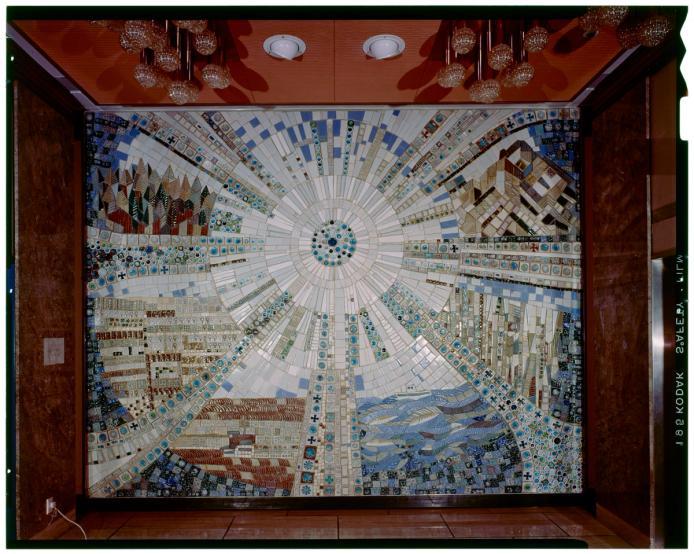
Roy Cowan (Ngāpuhi, Te Atiawa), Untitled [Europa House] (1972), CBD, Te Whanganui-a-Tara Wellington
Image: New Zealand Potters: Roy Cowan. Mural, circa 1975, New Zealand, by Brian Brake. Gift of Mr Raymond Wai-Man Lau, 2001. Te Papa (B.070910)
Te Ngākau Civic Square
Te Ngākau Civic Square was an urban development project that transformed Wellington's civic centre into the vibrant, public, people-friendly space that it is today. Public Art--and particularly the City-to-Sea Bridge--is at the heart of what has made this space so special for people.
With future major redevelopment and demolition planned for this area, it is important to highlight the public art that was at the heart of the original landmark development.
Scroll through the images below to view a set of 20th Century public artworks associated with this site. Click an image to learn more:
Featured artworks
L-R:
Matt Pine, Cone Piece (1986); Tanya Ashken, Albatross (1986); Cliff Whiting, Te Wehenga o Rangi rāua ko Papa (1975); Pat Hanly, Rainbow Pieces (1972); Guy Ngan, Taiaha (1972); Rita Angus, Untitled [Napier Girls' High School] (1960); Milan Mrkusich, Mosaic Mural for BJ Ball Building (1957); Molly Macalister, Little Bull (1968); Tuti Tukaokao, Kōruru, Wheku and Manaia Mural (1981); Marte Szirmay, Smirnoff Centenary Sculpture (1969); James Turkington, Untitled [Parnell Baths] (1957).
Featured artists
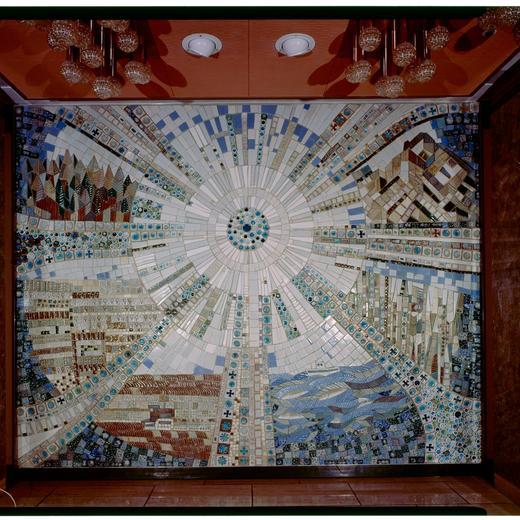
Roy CowanJames Robson Cowan
Roy Cowan MBE CNZM (Ngāpuhi, Te Atiawa) was a potter, illustrator, sculptor and printmaker. Born in Wellington, he trained as a teacher, and was also a pilot in WWII.
He studied teaching at the Wellington Teachers College (1939), where he specialised in art. In 1953 he was awarded the Association of Art Societies Scholarship and studied at the Slade School in London, where he developed his passion for lithography and pottery.
He worked in the Publications Branch of the Department of Education before becoming self-employed in arts and crafts from 1959.
Much of Cowan's art explored the nature of oppositions, juxtaposing binary images to form a harmonious work: nature and technology; interior and exterior; momentous and minor.
He created a large-scale ceramic wall mural for the 1970 World Expo in Osaka, and a mural for the foyer of the Reserve Bank of New Zealand in Wellington. Another mural, 'Modern Madonna', was commissioned for the Wellington Cathedral of Saint Paul.
Cowan was made a Companion of the New Zealand Order of Merit for services to pottery in the 2000 New Year Honours. His work is held in the Museum of New Zealand Te Papa Tongarewa, The Dowse Art Museum, and the Christchurch Art Gallery Te Puna o Waiwhetu.
Cowan recognised his Ngāpuhi and Te Atiawa decent through his mother's family. Eileen Stowell was the daughter of renowned Ngāpuhi interpreter, scholar and genealogist Henry Stowell (Hāre Hongi). Roy's father, historian and journalist James Cowan, was also fluent in Te Reo. Many of James Cowan's popular accounts of local histories were based on interviews with elders including the most authoritative, early twentieth century account of the The New Zealand wars: a history of the Māori campaigns and the pioneering period (1922–23). Eileen assisted James with his work including producing drawings and designs for illustrations for his publications.
See also:
NewsNgā karere
Keep up to date with our news:
Subscribe to our newsletter, and view past issues below.











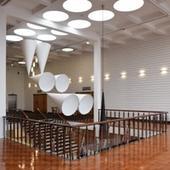
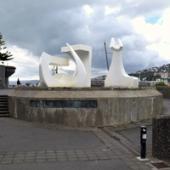
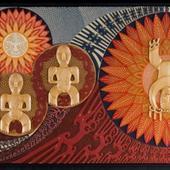


![Untitled [Napier Girls' High School]](/_next/image?url=https%3A%2F%2Fcdn.sanity.io%2Fimages%2Faem3610x%2Fproduction%2Fcd6b26f20fece3f8a233c89d78ea5c4f637a835d-842x1080.jpg%3Frect%3D0%2C119%2C842%2C842%26w%3D170%26h%3D170%26fit%3Dclip&w=384&q=75)
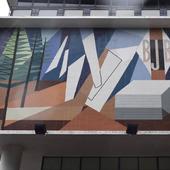
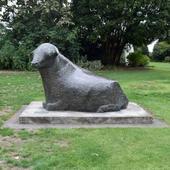
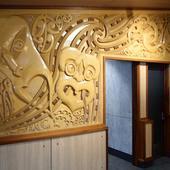
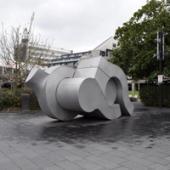
![Untitled [Parnell Baths]](/_next/image?url=https%3A%2F%2Fcdn.sanity.io%2Fimages%2Faem3610x%2Fproduction%2Fd9c570000a6691d729d50166088191785f63cd98-1596x1080.jpg%3Frect%3D258%2C0%2C1080%2C1080%26w%3D170%26h%3D170%26fit%3Dclip&w=384&q=75)